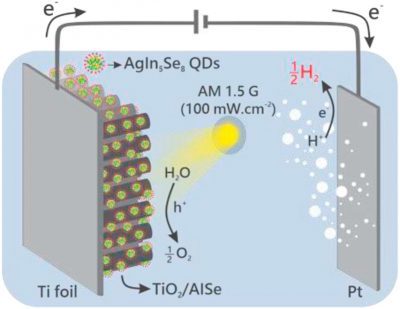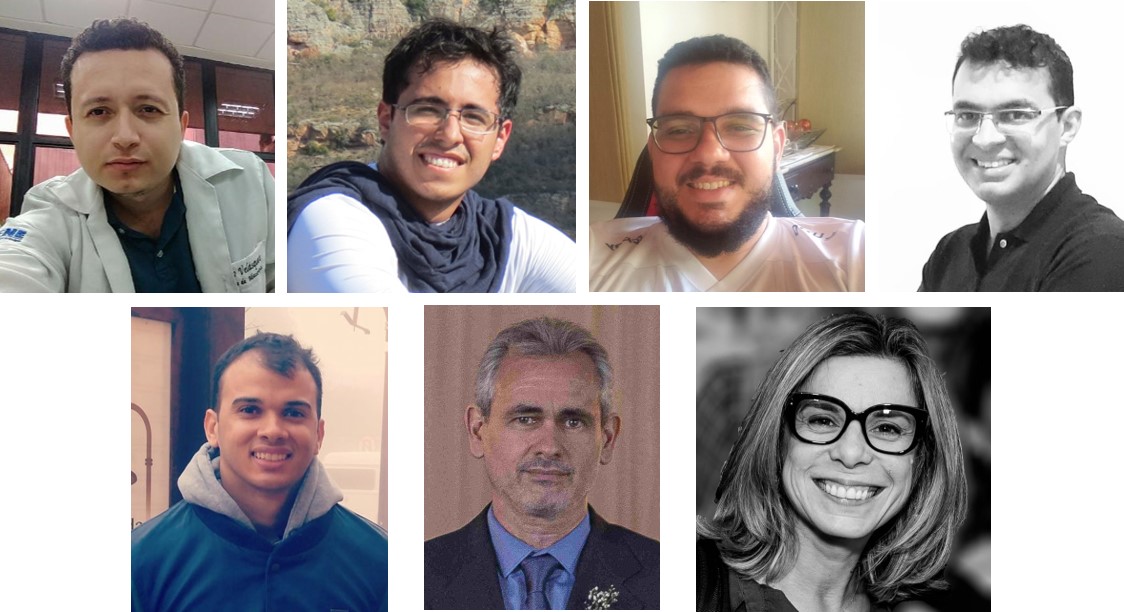
A work carried out in institutions from the state of Pernambuco (Brazil) contributes to the development of nanomaterials with the potential to overcome an important energy challenge: the generation of hydrogen through sustainable processes. In fact, the hydrogen molecule is considered a clean fuel because its use, or “burning”, does not emit greenhouse gases. However, the production of this molecule is responsible for emitting hundreds of tons of carbon dioxide per year.
Fortunately, more sustainable ways to produce molecular hydrogen are being explored by scientists around the world. The “greenest” of all are the photoelectrochemical processes, which consist of breaking down the water molecule (H2O) using electricity from photovoltaic conversion (the transformation of photons into electrons). These processes are carried out in photoelectrochemical cells – simple and low-cost systems basically composed of a photoanode, where sunlight is absorbed, thus generating a current of electrons, and a cathode, on whose surface the hydrogen detaches from the water molecule by the action of the electricity generated in the photoanode. In this context, it is essential to develop materials for the photoanode that are efficient and durable, and which can be produced using low-cost and environmentally friendly processes.
In an article recently published in the Journal of Power Sources (impact factor 9.1270), scientists from the Center for Strategic Technologies of the Northeast (CETENE) and the Federal University of Pernambuco (UFPE) report a simple and clean method to produce nanocomposites capable of generating an electrical current from sunlight. The work also presents good results in the application of the material as a photoanode for hydrogen production.
Challenge: increase photoanode sensitivity
Titanium dioxide (TiO2) is the most used material in photoanodes. Unlike other semiconductors, it is non-toxic and does not degrade easily in contact with light and water. However, this material has a limitation that affects its efficiency: it can only absorb ultraviolet light, not taking advantage of other radiations present in sunlight. For this reason, scientific efforts have been made to expand the sensitivity of TiO2. This was exactly the objective of the CETENE and UFPE team at the beginning of the collaborative work. The strategy they adopted was to integrate semiconductor nanocrystals (quantum dots) to TiO2 nanotubes and, in this way, obtain a material that is more sensitive to sunlight thanks to the synergistic action of both semiconductors.
The researchers started by sensitizing the nanotubes with bismuth sulfide (Bi2S3) nanocrystals, says Denilson V. Freitas, who now works as a researcher at CETENE and has participated in this research line since the beginning, when he was doing his doctorate in Chemistry at UFPE. In the experiments, the scientists noticed that the method of preparing the nanocomposite significantly impacted its photoelectrochemical performance, and reported these results in an article published in 2018 in ACS Applied Energy Materials (impact factor 6.024). “We found that the best photoelectrochemical results were for the linker-assisted method when compared to the hydrothermal method,” says Denilson. Thus, the first method was chosen. In
linker-assisted sensitization, TiO2 nanotubes, supported on titanium sheets, are submerged in a solution containing the chosen nanocrystals. Both materials interact and, at the end of the process, the quantum dots are adsorbed on the surface of the nanotubes.
The second phase of the research was carried out within the Master’s Degree project in Materials Science by Danilo A.P. Velásquez, carried out at UFPE. This time, the scientific team used silver, indium and selenium nanocrystals (AgIn5Se8) with the main objective of determining what would be the optimal submersion time of the nanotubes in the solution, as the researchers had noticed that high concentrations of nanocrystals on the surface of the nanotubes affected in a negative way the performance of the nanocomposite. For this, they performed a series of experiments varying the submersion time between 1 hour and 48 hours.

In addition to observing through electron microscopy techniques the concentration of nanocrystals obtained in each case, the researchers checked the performance of each sample. The results showed that the photoletrochemical performance of nanotubes improved with increasing sensitization time up to 24 hours of immersion, when the obtained nanocomposite generated a photocurrent 2.4 times greater than that of pure nanotubes. Furthermore, the optimized nanotubes also improved their performance in hydrogen production, which was 3.1 times greater than that of the material without quantum dots. The experiments also demonstrated that, after 24 hours of immersion, the concentration of nanocrystals became excessive and impaired the functionality of the nanocomposite. “The work showed that the temporal optimization of the sensitization of nanotubes is an important step in the production of more efficient systems,” summarizes Denilson.
The research was carried out by researchers and students linked to postgraduate programs in Chemistry and Materials Science at UFPE, coordinated by professor Marcelo Navarro, and to CETENE, led by researcher and director of the center Giovanna Machado. The acquisition of images of nanotubes sensitized by high resolution transmission electron microscopy were performed at SENAI-MG. The works were funded by Brazilian research funding agencies CNPq, FACEPE, CAPES and Finep.

Scientific article reference: Boosting the performance of TiO2 nanotubes with ecofriendly AgIn5Se8 quantum dots for photoelectrochemical hydrogen generation. Danilo A. P.Velásquez, Felipe L. N.Sousa, Thiago A. S. Soares, Anderson J. Caires, Denilson V. Freitas, Marcelo Navarro, Giovanna Machado. Journal of Power Sources. Volume 506, 15 September 2021, 230165. https://doi.org/10.1016/j.jpowsour.2021.230165.
Contact of the corresponding author: Giovanna Machado – giovanna.machado@cetene.gov.br.
